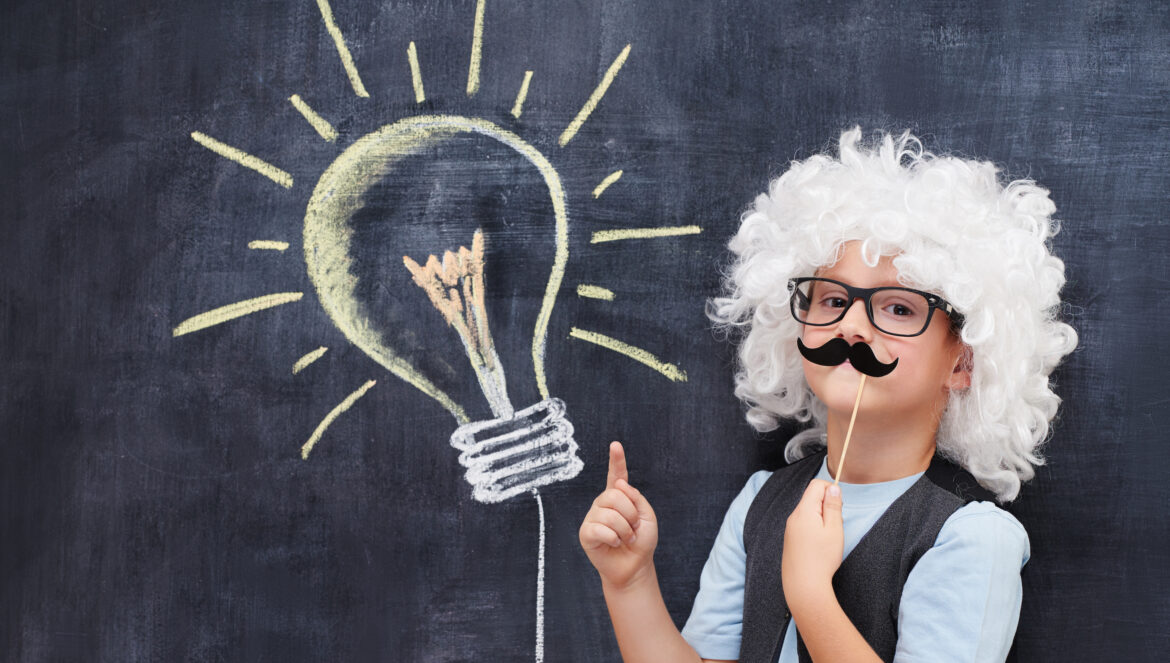Table of Contents
One of the most frequently repeated quotes on failure and resilience comes from Thomas Edison. While talking about his experiments in designing a new kind of storage battery, he said, “I have not failed. I have discovered 10,000 ways that don’t work!” No one doubts the impact Edison’s creative innovations have played in shaping society.
From batteries and light bulbs to phonographs and cameras, Edison is credited with more than a thousand inventions over his lifetime. It’s clear from his many accomplishments that Edison was a rare creative genius. But where did his ability to persevere despite repeated failures come from? Why did he succeed when others didn’t?
Edison was a voracious learner, and had the intellectual capacity to apply his knowledge toward solving practical problems. But he was likely also confident in his ability to innovate, which helped him persevere through long stretches of failures. This creative self-efficacy might have been a key factor in his success. As psychologist Albert Bandura explains, “Innovativeness requires an unshakable sense of efficacy to persist in creative endeavors when they demand prolonged investment of time and effort, progress is discouragingly slow, the outcome is highly uncertain, and creations are socially devalued when they are too incongruent with pre-existing ways.’’
Build Skills for Creative Thinking
Creative self-efficacy, or creative confidence, is the belief that one has the ability to produce creative outputs. Creative self-efficacy has been found to be a significant predictor in students’ initiation of independent projects and also helps students persevere when they are faced with setbacks and failures.
Given its crucial role in creative accomplishments, building creative confidence in your students is extremely valuable. Here are three ways to do it:
It’s not possible to be confident in an area without mastering the skills for that domain. Bandura identified the experience of mastery as the most important factor in building self-efficacy, in general. From a creative confidence perspective, that implies building creative thinking skills, like associative or analogical thinking, that can be used in problem solving.
In a study on creative self-efficacy, researchers gave participants a one-day or a five-day training on creativity, along with a control group that got training in statistics and mathematics. The results showed that creative self-efficacy was increased for both the one-day and five-day groups, with a larger gain for the five-day group. In addition, participants who were convinced that they have the skills and knowledge to be creative persevered in difficult tasks and recovered better from setbacks.
The researchers concluded that “…creativity training based on a cognitive modeling perspective seems to be a fruitful approach for schools and organizations that aspire to enhance creativity levels in their students or employees.”
Set the Right Expectations
Creativity involves failures along the way, so students will often second-guess their abilities. An encouraging environment where teachers provide validation of their students’ ability to be creative, and one where failures are part of the process, is an important factor in developing creativity. When a student sees that despite their mistakes, their teacher and peers think they can improve their idea or find a different way to solve the problem, they are more likely to believe in their own creative abilities.
In a study conducted over a six-month period, researchers observed employees in a child welfare organization to determine how creative self-efficacy develops in a real work environment. They found that when employees came to believe that their supervisors expected them to be creative, it increased their creative self-efficacy over time.
This expectation maps to the social persuasion in Bandura’s self-efficacy model. In an encouraging environment with positive expectations, a student might conclude, “If others think I am creative, then I must be creative.”
Give Opportunities to Practice
Finally, having lots of opportunities to work the creative muscles can do wonders in building creative confidence. Starting with smaller creativity challenges is better than starting with something big, which can be intimidating for students. As students tackle simpler problems, the small wins build up confidence to tackle more challenging ones, and solving those leads to even larger confidence gains.
Differentiating Creative Output
Creativity research distinguishes between the type of creative output, with little-c creativity on one end and Big-C creativity on the other. Little-c creativity refers to the simple, everyday creative experiences like coming up with a fun way to teach a topic, or a student making a connection between condensation and foggy windshields. The key for little-c creativity is that they be original to the creator, even if the idea or insight is known to others. This is in contrast to Big-C creativity, which refers to the eminent levels of creative achievements like those of Einstein or Mozart.
However, no one can reach Big-C levels without high levels of both creative abilities and creative confidence to sustain long and frustrating periods of failure. These everyday little-c experiences build creative confidence that can eventually pave the way for big-C creative accomplishments.
Value of Creative Skills
As we move deeper into the 21st century, skills like creativity and confidence are becoming critical. Jobs that require creativity tend to be more challenging, more valuable, and are deemed more interesting than jobs that don’t. Building creative thinking abilities, setting a positive environment and expectations as students practice problem solving, can build students’ creative confidence and set them up for success as they enter the workforce.
Further Reading
- edCircuit – Why Creativity Should Be Taught In Schools
- edCircuit – Why Group Brainstorming Is Only One Part of Creative Ideation
- The Journal – How Creativity Boosts Student Success



